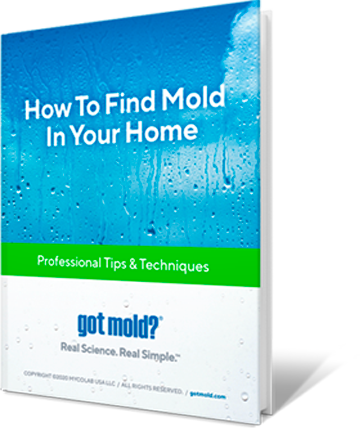
You’ve probably heard the phrase “There’s no such thing as a free lunch.” But have you ever wondered where it came from?

The “free lunch” refers to the long-gone tradition of pubs and taverns providing a complimentary midday meal to their patrons. Of course, the meal always consisted of food so salty that anyone who ate it needed plenty of drinks — drinks that were definitely not fee — to wash it down. Sure, the lunch was complimentary, but you better believe money was eventually spent.
Or think about casinos plying their patrons with free drinks. They understand very well that the more a gambler drinks, the longer they will stay at the table and the riskier their bets will become. That gin and tonic won’t taste so good once the dealer is holding all your money.
This same kind of scheme applies to so-called “free” mold inspections.
A Hammer in Search of a Nail
Most, if not all, individuals or companies that offer free inspections aren’t actually mold inspectors. They are mold remediators—the ones brought in to fix a problem, not diagnose it. Therefore, everything they do or say during the free part is with the intention of getting paid; of inducing enough fear and panic that the homeowner seemingly has no choice but to open their wallet.
An inspection done right takes several hours on-site and usually costs somewhere around $1500, including testing, which involves the analysis of samples by an independent, third-party laboratory. The lab certainly doesn’t work for free, nor does a reputable inspector. And that’s just the beginning. There’s also the time spent properly documenting the findings, formulating detailed remediation and repair plans, and following up to ensure that those plans are properly executed.
Trust me: a free mold inspection like this doesn’t exist.
What’s really happening during one of these “free” inspections is that someone from a mold remediation company — not a mold inspection company — will come to your home and seek out a mold problem, whether you have one or not. A hammer in search of a nail. Make no mistake, they will find something, and then they will use what they find to sell you on their mold remediation services. At the time it may seem convenient, like one-stop shopping, but these guys aren’t doing you any favors.
And the “convenience” doesn’t stop there. These companies will even offer to do more testing after the remediation to make sure the problem was fixed. What this means is that they will be checking their own work, which is not a check at all, but rather a blatant conflict of interest. So blatant, in fact, that it’s illegal in several states. It’s the same reason why you would never have an art dealer do their own authenticating.
Inspectors who also do remediation has been illegal in the asbestos industry for ages, and it stands to reason that it should be illegal in all 50 states when it comes to mold, too. Eventually, it will be. In the meantime, you, the consumer, need to be aware of the landscape and protect your own interests, because there are more companies out there doing it the wrong way than the right way.
The Real Deal
So, what should a proper mold inspection entail?
First of all, it’s usually at least a 2-3 hour commitment on-site, beginning with learning about the background of the building and the concerns of the occupants, followed by a comprehensive physical inspection of all accessible areas of the building, inside and out. Various screening methods are employed to “peel the layers of the onion” away.
Infrared cameras, laser particle counters, electronic moisture-detection equipment, and other tools, may be utilized by an experienced, well-trained specialist. Following the first phase of the inspection, a testing strategy should be developed and then approved by you, the homeowner. Samples should be collected in accordance with industry standards and sent to an accredited third-party lab for analysis.
When the results come back, a document should be generated containing all of the observations made, including building defects, deficiencies, repairs needed, and a comprehensive remediation plan, along with the laboratory report and a written summary of the analysis, preferably in language that anyone can understand. It’s a step-by-step game plan designed to be the blueprint for restoring the property to a “normal,” healthy condition. This is how it should be.
And it doesn’t end there. An environmental consultant would then help you select the contractors, returning to do follow-up inspection(s) and testing to make sure the work has been completed satisfactorily. If more work is still required, the contractor must then come back and do what’s necessary to complete the project — at no additional charge — as many times as needed. Then, and only then, they should be paid. You’ll breathe easy knowing that you’ve actually gotten what you paid for.
Try getting all of that for free, no strings attached. Now try asking the pub to hold the salt on your free lunch. Not gonna happen.
Video: Click on the video links below to watch a very enlightening ABC News piece that looks at various mold companies and some of their unsavory tactics.
ABC News: One house. Seven mold inspectors with radically different approaches. Who do you trust?


ME AND MY KIDS MOVED TO THESE APARTMENT 2 YEARS AGO AND WEVE BEEM SICK SINCE COVID IS RULED OUT BECAUSE WE TESTED